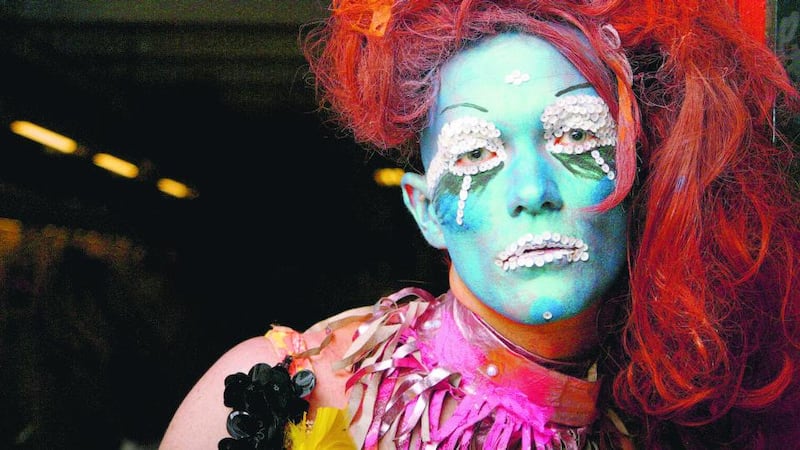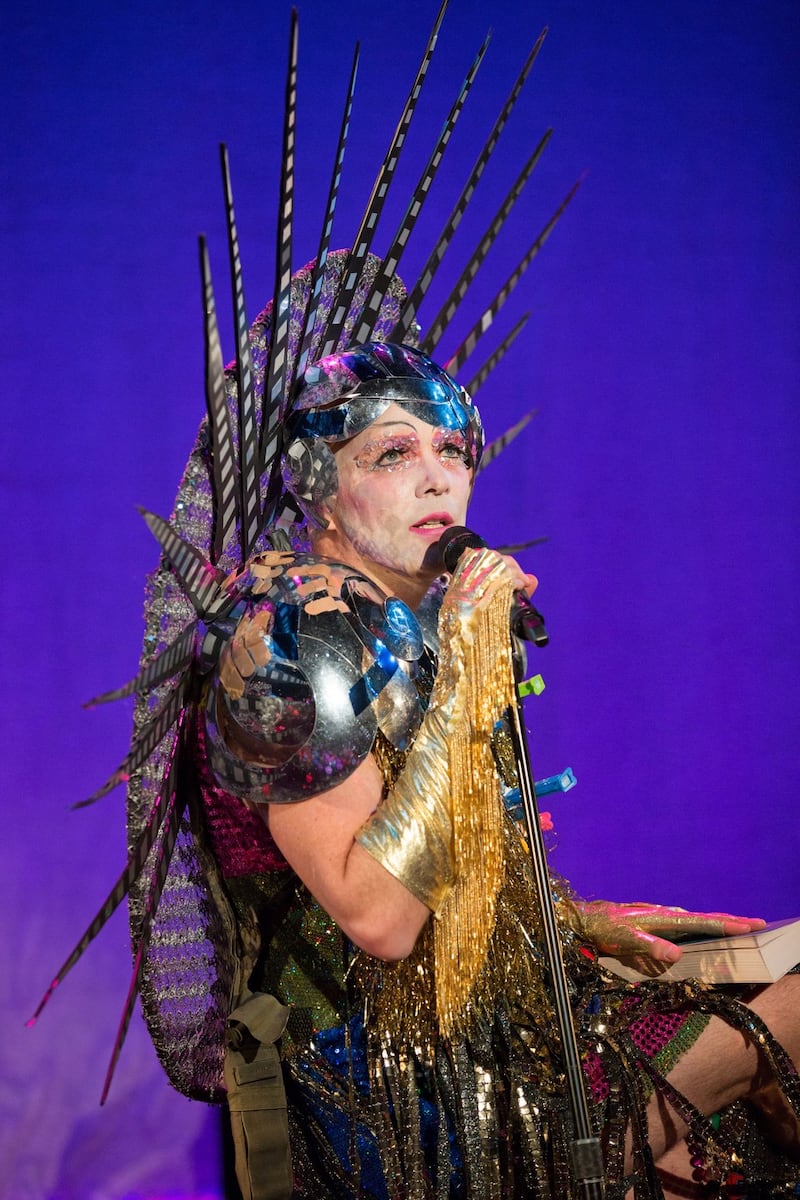Imagine running a marathon in stilettos. While singing your heart out. That's the kind of mad feat the singular performer Taylor Mac has embarked upon in his magnum opus, A 24-Decade History of Popular Music, which will ultimately climax in an epic show to be performed for 24 straight hours.
In 2013, Dublin audiences got a small flavour of what to expect from the show, when Mac brought an abridged version of it to the Dublin Fringe Festival. Mac - and his collaborators, and his audiences - are currently in the training stages for the full onslaught. The first two parts of this staggering undertaking, celebrating the songs from the first half of the 20th century, are being presented at New York Live Arts in association with the Under the Radar Festival. The whole will cover the life span of America: 1776 through 2016, when that epic performance will take place.
The first program, which runs until Saturday, explores the songs from the first three decades: the 1900s through the 1920s. Next week, it’s on to the following three decades, and on January 25th Mac will perform both parts together, in a six-hour marathon.

With its scholarly title, Mac’s show may sound soberly academic - like a singing textbook - but if you’ve ever seen him in performance, you know there’s nothing even faintly fusty about him. To classify him as a drag queen would be far too limiting, but yes, the lithe and statuesque Mac generally performs in glitter-bedecked dresses and elaborate headgear, in kabuki-white makeup generously applied and sprinkled with sequins. (His longtime costume designer, who goes by the daffy name Machine Dazzle, has outdone himself here.)

While Mac’s appearance suggests an exotic cross between Marlene Dietrich and pioneering gender-skewing performers like the Cockettes, his cozy performing style - as in his similarly expansive “The Lily’s Revenge” - cuts through the glamorous artifice with winning geniality. He may look like a diva from another planet, but his spike heels are firmly planted on earth.
In this playful and thoroughly winning tour through American pop history, Mac isn’t merely performing a concert, although he sings more than 30 songs, in a voice that can range from a silken croon to a blistering belt. (He’s backed up by an excellent five-piece band and another vocalist.) His interest in pop is as much anthropological as musical.
Drawing links between the songs he sings and contemporaneous history and culture, Mac, who directed the show with Niegel Smith, finds in popular music a revealing mirror of the times. With an emphasis on the experience of outsiders in America - Mac says, somewhat obscurely, that an overarching aim of this project is “the unearthing of queer agency” in our national history - he invites the audience to time-travel along with him and experience the turbulent past by playing its own role in the show.
Yes, this means you will be invited to sing, too. And you might want to dress to impress, for that matter: The audience in its entirety, save for those members who are unwilling or unable, joins Mac onstage for ample sections of the show, plopped down on the floor.
The exodus from our seats takes place in the first part, which looks at the songs of the first decade of the 20th century through the prism of the immigrant experience, specifically the Jewish immigrant experience. Row by row, Mac enjoins the audience to hustle down to the stage; we are fleeing pogroms in Europe and settling tightly together in the tenements of New York.
The soundtrack to this experience includes familiar songs like “Shine On Harvest Moon” and “A Bird in a Gilded Cage,” but Mac also performs, hauntingly, a Yiddish song, and an Irving Berlin tune, “All Alone,” which springs, he imagines, from a yearning born of the oppressive nature of tenement living, which made solitude a rare treasure.
As Mac moves into the 1910s, the focus moves to the ravages of World War I (His new costume includes a fanciful hat made from a gas mask). America’s entry into the war and the divisions in the culture it opened up are humorously evoked as the audience is divided into pro-war and anti-war factions. Each sings its own version of “I Didn’t Raise My Boy to Be a Soldier.” For the pro-war group, the lyrics are rewritten to reverse the sentiment, becoming “It’s Time for Every Boy to Be a Soldier.” Angry fist-shaking at the opposing faction is encouraged.
In this section, Mac’s particular interest in queer history comes to the fore, as he recasts “Keep the Home Fires Burning”, another wartime morale-booster, as a love song between two women who discover their attraction to each other when their husbands have enlisted.

The emphasis is carried through into the final third of the show. (Each part runs about one hour, and while there is no intermission, the audience is encouraged to come and go as needed.) Here, Mac dramatizes the after effects of war through the experience of a gay male couple. Mac sees the frenzy of the roaring ‘20s as a reaction to the grim tide of war that swept the world in the decade before.
Behind peppy songs like “Singin’ in the Rain” and “Tiptoe Through the Tulips,” Mac espies a frantic need to forget those horrors. The desperately cheery mood that they encourage (“like a Baz Luhrmann film,” Mac cracks) was an attempt at “squashing down trauma.” The gay couple embody both reactions: denial and acceptance of the emotional dislocation brought about by the years of conflict and the millions killed.
But I don’t want to leave the impression that there’s anything heavy, or heavy-handed, about Mac’s production. Although audience interaction ranks somewhere near the bottom of my theatergoing wish list, I found it impossible to resist Mac’s invitation to join the festivities. For a collective, slightly raucous party is what this buoyant show consistently evokes, right down to the mixer games and the balloons.
For more go to onewyorklivearts.org.
New York Times News Service












